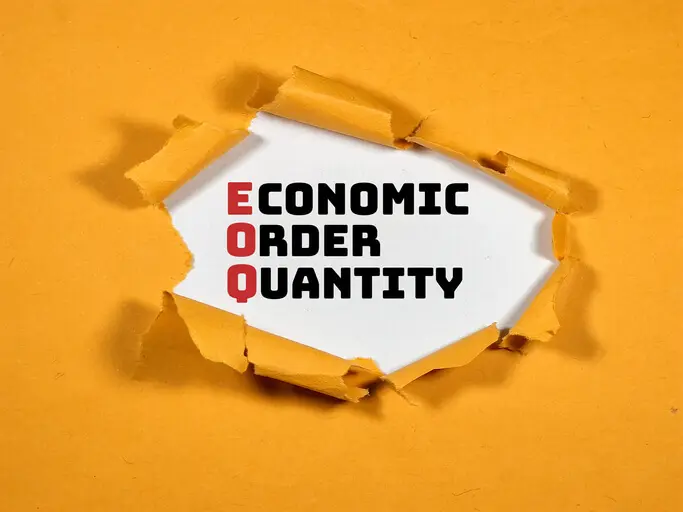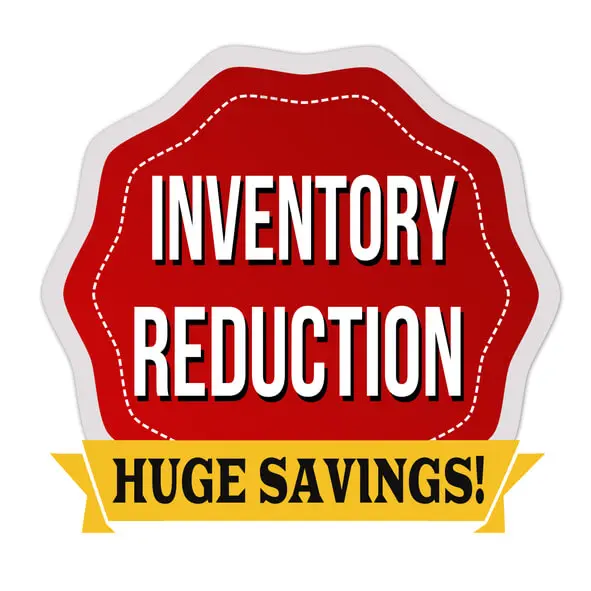Is your capital just sitting in boxes, gathering dust on warehouse shelves? That quiet hum of the A/C and the monthly insurance bill are constant, nagging reminders of money tied up in things you haven’t sold yet. It’s a frustrating reality for a lot of businesses. The inventory holding period (IHP) is the metric that cuts through the noise. It tells you the average number of days your company holds onto its inventory before selling it, acting as a crucial vital sign for both your financial and operational health.
What is the Inventory Holding Period?
Put simply, the inventory holding period is the average time, in days, that your stock sits in the warehouse before it’s sold. It’s a core key performance indicator (KPI) for any business that sells physical products because it gives you a brutally honest look at your operational efficiency. You’ll also hear it called by a few other names, like Days Sales of Inventory (DSI), Inventory Days, or the Stock Turnover Period.
Getting a handle on this metric is non-negotiable. It directly reflects how sharp your inventory management is, how much liquidity you have, and whether your sales process is actually working. A lower IHP is usually a great sign—it means sales are strong, management is on point, and you’re turning products back into cash quickly. A high IHP, on the other hand, can be a major red flag. It might be pointing to serious issues like overstocking, sagging sales, a poor use of capital, or even a problem with the product itself. The overall inventory days turnover gives you a clear snapshot of this dynamic.
How to Calculate the Inventory Holding Period
Alright, let’s get into the numbers. Calculating your inventory holding period is actually pretty straightforward once you know the pieces. The main inventory days ratio formula is:
IHP = (Average Inventory / Cost of Goods Sold) × Number of Days in Period
Let’s break that down piece by piece so it all makes sense.
First up, you need your Average Inventory. This figure gives you a much more stable and realistic picture of your stock levels over time than just a single point-in-time snapshot. To get it, you just add your inventory value at the start of the period to the value at the end, and then divide by two.
Average Inventory = (Beginning Inventory + Ending Inventory) / 2
Next is the Cost of Goods Sold (COGS). This is the sum of all direct costs that went into producing the goods you sold. It’s critical to use this number instead of revenue because COGS strips out your profit margins. This gives you a true apples-to-apples comparison, reflecting the actual cost of the inventory you were holding. Getting the inventory turnover in days formula right depends on this accuracy.
Finally, the Number of Days in Period is just the timeframe you’re looking at. Most of the time, this will be a full year (365 days) or a quarter (90 days).
Here’s a quick example. Let’s say a company called “Efficient Widgets Inc.” is looking at its numbers for the last fiscal year.
- Beginning Inventory: €200,000
- Ending Inventory: €300,000
- Cost of Goods Sold (COGS) for the year: €1,500,000
- Number of Days in Period: 365
Step 1: Calculate Average Inventory
(€200,000 + €300,000) / 2 = €250,000
Step 2: Apply the IHP Formula
(€250,000 / €1,500,000) * 365 = 60.8 days
So, the inventory turnover in days for Efficient Widgets Inc. is about 61 days. This means that, on average, one of their widgets sits on a shelf for about two months before finding a home.
Interpreting Your Inventory Holding Period
Getting the number is the easy part. The real value comes from understanding what it’s telling you about your business.
A high IHP means your inventory is sitting around for way too long. This is bad news for a few reasons. You’re bleeding money on carrying costs—things like storage, insurance, and security. It also means a huge chunk of your capital is frozen in stock when it could be funding growth, marketing, or R&D. Worse, the longer something sits, the higher the risk of it becoming obsolete, spoiling, or getting damaged, which ultimately leads to write-offs and losses.
On the flip side, a low IHP is generally something to celebrate. It suggests products are flying off the shelves, your inventory management is dialed in, and your cash is cycling efficiently. But there’s a catch: an extremely low number can be a warning sign, too. It might mean you’re understocking, which leads to stockouts, angry customers you can’t serve, and missed sales opportunities that can damage your brand’s reputation.
The “right” inventory holding period isn’t a one-size-fits-all number; it changes dramatically from one industry to the next. What’s amazing for a car dealership would be a complete disaster for a grocery store. Context is everything.
Strategies to Optimize Your Inventory Holding Period
Bringing that number down isn’t about magic; it’s an active process that touches multiple parts of your business. If you want to shorten the time your inventory sits idle, you need to pull the right levers.
Enhance Supply Chain and Warehouse Management
How your products physically move from A to B is a huge factor. Adopting a Just-in-Time (JIT) inventory model, where materials show up exactly when you need them, can slash the amount of stock you have to keep on hand. You can also work with suppliers to get shorter lead times and more frequent, smaller deliveries to reduce the need for a massive safety stock. And inside your own four walls, a smarter warehouse layout, better pick-and-pack systems, and targeted automation can make sure goods flow through without getting stuck.
Improve Demand Forecasting and Planning
One of the best ways to lower your holding period is to stop guessing what your customers want. You need accurate demand forecasting. Go beyond gut feelings and start leveraging historical sales data, market trends, and seasonality. Modern forecasting software, especially tools using AI and machine learning, can spot complex patterns and generate incredibly accurate predictions. Better forecasts mean you order the right stuff, in the right amounts, at the right time. No more mountains of unwanted stock.
That’s where Intuendi comes in. Our AI-powered forecasting platform helps you anticipate demand shifts, reduce inventory holding periods, free up working capital, and avoid the costly cycle of stockouts and overstocks.
Manage Product Lifecycle and Obsolete Stock
Every business has them: the slow-movers, the dust-collectors. This dead stock can seriously inflate your IHP. You need a proactive plan for managing the entire product lifecycle. Regularly run reports to identify at-risk stock that hasn’t moved. Once you find it, take action. Liquidate it through promotions, flash sales, product bundling, or by selling it to off-price liquidators. For any business with constantly evolving products, planning clearance sales for old models before the new ones launch is key to preventing future problems.
IHP in the Broader Financial Context
This metric doesn’t live in a vacuum. It’s deeply woven into the financial fabric of your company and is a key factor in overall inventory turnover rates. It has a direct, inverse relationship with the Inventory Turnover Ratio—another crucial KPI. Think of them as two sides of the same coin: a high turnover ratio means you’re selling fast, which naturally results in a low inventory holding period.
More importantly, the IHP (or DSI) is a pillar of the Cash Conversion Cycle (CCC). The CCC tells you the story of your cash—specifically, how long it takes for your company to turn investments in inventory into actual cash from sales. The calculation is:
CCC = DSI + DSO – DPO
(Days Sales of Inventory + Days Sales Outstanding – Days Payable Outstanding)
This cycle shows you exactly how long your cash is tied up in operations. By lowering your inventory turnover ratio in days (the DSI), you directly shorten the CCC. That means you get your cash back faster. This acceleration is incredibly powerful, freeing up working capital you can then use for investment, paying down debt, or jumping on strategic opportunities.
Modern Risks and Considerations of IHP
Today, the stakes of a poorly managed IHP go beyond just the financials. The opportunity cost is massive; every dollar locked in a box on a shelf is a dollar you can’t use to innovate, market, or outmaneuver the competition. This strain on liquidity can also make it harder to get financing or even hurt your company’s credit ratings.
And then there are the growing ESG (Environmental, Social, and Governance) factors to consider. Holding onto excess inventory creates a larger carbon footprint. It takes more energy to light, heat, and cool warehouses, requires more transportation, and almost always leads to more waste. When those products finally become obsolete and have to be thrown out, it creates a direct, negative environmental impact—something that consumers, investors, and regulators are watching more closely than ever.
Using IHP as a Strategic Lever
It’s time to stop thinking of the inventory holding period as just another passive number on a dashboard. It’s a diagnostic tool. A strategic lever. By understanding the stock turnover period formula, interpreting what the result means for your industry, and putting targeted strategies in place, you can trigger a domino effect of positive changes. Optimizing your inventory turn days leads directly to improved cash flow, lower operational costs, higher profits, and ultimately, a more resilient and powerful competitive advantage. Your inventory isn’t just a cost—it’s a dynamic asset whose efficiency can fuel your company’s future.






